SKL is reader supported. When you buy through links on our site, we may earn affiliate commission. Learn more here.
When it comes to topping the charts in the fashion industry, Nike is a force to be reckoned with.
You’ll find it ranking among the most popular, most valuable, and biggest apparel and sportswear brands.
Some even perceive it as one of the most sustainable brands operating today.
But how ethical can one of the biggest apparel brands really be?
As we’ve looked into before, large scale and mass production can be tricky to accomplish ethically.
This post will explore the ethics and sustainability of fashion behemoth Nike by diving into its practices and claims.
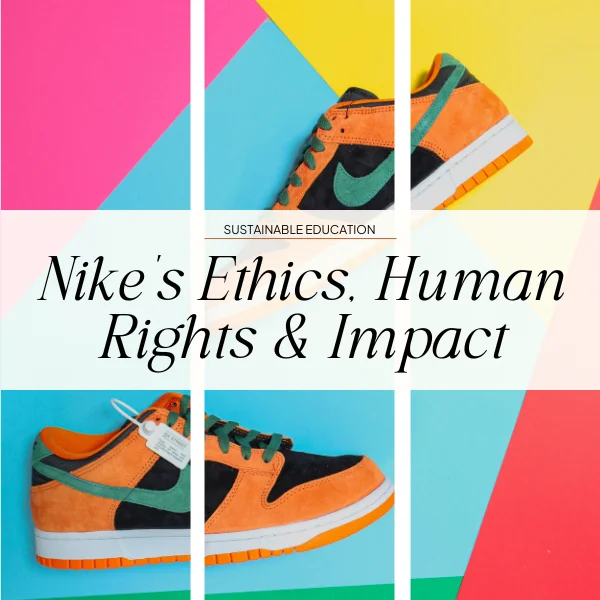
Nike is currently valued at around $31 billion in revenue, making it the leading American fashion brand and competing against luxury fashion houses LVMH (Louis Vuitton, Dior, Givenchy) and Kering (Gucci, Balenciaga, Saint Laurent) for top global rankings.
In popularity, the Nike website is the second most popular apparel site behind SHEIN.
Nike has dominated the market as a sportswear and fashion brand thanks to unbeatable marketing and iconic, cult-favorite sneakers like Air Force 1s and Air Jordans. They also own Converse.
As a brand with undeniable scale and influence on the industry, it’s important to consider Nike’s environmental and social impact.
Is Nike fast fashion?
While some brands might not be categorized as outright fast fashion, like H&M, SHEIN, and ASOS, many brands operate with a fast fashion business model.
Fast fashion can be reduced to and defined by the churn of clothing, i.e. a brand produces a lot of clothing in a short amount of time.
In this case, Nike is most definitely a fast fashion brand.
Nike produces in around 40 different countries with approximately 600 different suppliers and partners, a scale that is hard to manage sustainably.
They are selling hundreds of millions of pairs of shoes every single year. They generally put out new products on a bi-weekly basis.
In the 2 months leading up to the 2023 NBA tournament, Nike released 36 new sneakers in preparation for the all-star game alone, not counting the rest of its regular collection releases.
Nike generates and thrives on “hype culture” which is a way of marketing and selling products by fabricating demand and exclusivity.
As Alec Leach explores in his book The World is on Fire but We’re Still Buying Shoes, hype is “about making ordinary products seem much more important than they really are. It’s a mirage that tricks us into buying more than we really need.”
He details how Nike engages in hype culture by leveraging scarcity with drops, limited releases, and collaborations to bolster demand and brand value all while maintaining access with their basic, but still coveted general releases like Air Force 1s.
This means Nike can still make a ton of money even if certain shoes are released in small batches.
Thanks to the hype of the exclusive drops, customers want Nike however they can get it.
Leach describes how this model is “manufactured to keep us coming back for more, trapped in a perpetual state of wanting things we can’t have. The urgency around it all gets people hooked on shopping.”
This type of consumerism is exactly how fast fashion operates— it’s designed to create a shopping pattern in which too much clothing is being produced, consumed, and subsequently thrown away in a short amount of time.
But hey, it’s lucrative for the brand, so who cares if it means our landfills will keep filling up with fossil-fuel fabrics and sneakers for centuries, right?!
Is Nike sustainable?
Now, we didn’t really bury the lead here, so you may guess how we are going to answer the question of Nike’s sustainability and ethics.
But, the answer isn’t clear for many.
A handful of years ago, Morgan Stanley released a report naming Nike the most sustainable apparel and footwear brand in North America thanks to its ESG efforts and plans.
Whether Nike is truly sustainable has more to do with what it’s putting into practice versus what it’s publishing on its website.
Below, we will explore different “sustainability initiatives” and aspects of Nike’s business model and weigh just how ethical they are.
Is Nike Greenwashing?
Nike’s Sustainability Targets
Ever the marketing masters, Nike’s website features attractive graphics and statements that make their environmental policies look and sound pretty cool.
They’ve coined their initiatives “Move to Zero” which details Nike’s “journey toward zero carbon and zero waste.”
Fashion Revolution’s Fashion Transparency Index reported that while Nike discloses many policies and commitments (with a score of 92 out of 100), their traceability (56/100) and actual demonstration and reporting of follow-through (32/100) and due diligence are lacking.

While it’s great to have robust sustainability policies and goals, they are only as meaningful as the implementation of them.
To Nike’s credit, they do prioritize innovation (generally and in eco plans) and have been engaged in some environmental efforts for a lot longer than the many brands that have hopped on the necessary “trend” in the last couple years.
However, they repeatedly face supply chain scandals (there is no sustainability without worker safety), don’t report enough due diligence, and haven’t yet scaled their sustainability efforts to address their size, impact, and continued growth.
Recycled Materials
One goal of Nike’s is to use 50% environmentally preferred materials by 2025 in their products made up of their key materials: polyester, cotton, rubber, and leather.
Nike develops their own materials like Nike Forward, Flyknit, and Flyleather and uses existing eco-materials like recycled polyester and organic cotton.
This all sounds great, but we have to consider the context of these materials and Nike’s impact.
Nike is the top sneaker brand. Footwear poses a significant environmental dilemma due to the typically synthetic materials used and the complexity of shoe construction.
Even recycled polyester and nylon still require plastic inputs, which inherently relies on continued fossil fuel production, even if secondarily.
When shoes are made with mixed materials and can be composed of around 65 different parts, deconstructing them and recycling them becomes virtually impossible. Around 90% of shoes end up in landfill where they’ll sit for centuries thanks to their petrochemical inputs.
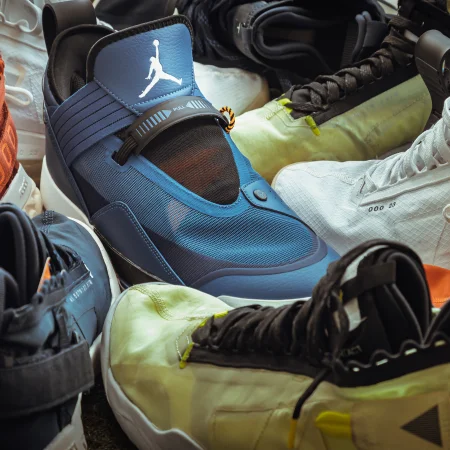
Switching out some of these materials, while potentially reducing production impact, doesn’t address end-of-life impact. Around 300 millions shoes are disposed of each year.
No material innovation is going to be able to address the scale and harm of that waste without also cutting back the scale of production.
Nike’s novelty sustainable materials mean less when a brand is still producing hundreds of millions of shoes a year, especially when those materials are reserved for only a portion of the products made and sold.
Also of note is that Nike has been sued for their “sustainable” labeling when only about 10% of the items listed within its sustainable collection actually had any amount of recycled material in it.
The lawsuit alleges that a majority of the collection is still made with virgin synthetics and then combined with the environmental concerns of recycled synthetics, Nike can’t truthfully claim these products are environmentally responsible.
The Recycling Program & Nike Grind
Nike has both the Reuse-a-Shoe shoe-only recycling program and a newer take-back program that accepts apparel alongside shoes as part of their Move to Zero plans.
Nike claims that the collected goods are sorted for recycling or donation to organizations helping those in challenging circumstances.
However, Nike doesn’t specify who their donation partners are and shoe donation programs can be tricky because shoes often lose their pairs in all the transportation and changing hands, rendering them useless.
It’s impossible to know if their “donation” program has any positive impact, given how little Nike discloses about it.
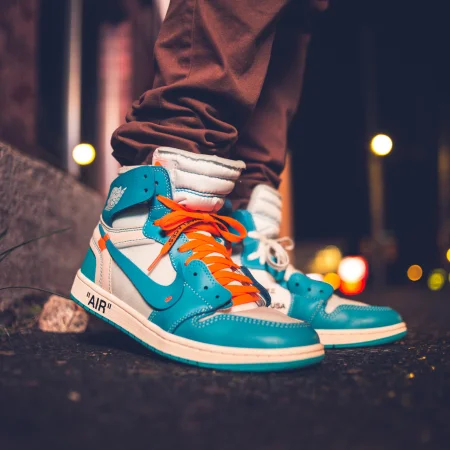
What doesn’t get donated is said to be recycled. Nike’s branded recycling program centers around Nike Grind.
Manufacturing waste, unused materials, and end-of-life shoes are collected, sorted, and processed into Nike Grind materials.
For example, with Nike’s partners, the collected Nike Grind rubber can be turned into sports surfaces and flooring or the foam may be used as carpet padding and furniture. Note: these processes are downcycling, not recycling.
Though, some of it does get recycled into Nike’s new products but it’s a surprisingly low amount given how much Nike claims this is a circular program.
While the Nike Grind program is doing some cool things to redistribute shoe waste and to innovate with the materials, it’s unclear that it’s a truly circular model.
Nike doesn’t disclose how many stores still operate the Reuse-a-Shoe program and only 8 stores are currently running the shoe and apparel take-back program in the US (Nike operates 290 stores in the US and over 1,000 worldwide).
A documentary in the UK took a look into Nike and found that the Nike website was making claims about the availability of the recycling program that weren’t true. While Nike’s recycling program certainly has potential, its true impact is hidden because of Nike’s own vagueness surrounding it.
The Nike Grind website claims that 140 million pounds of Nike Grind have been recycled in the 30 years since the start of the program in 1992.
That’s an average of 4.6 million pounds a year.
Remember, Nike makes hundreds of millions of pairs of shoes (an estimated 780 million) a year. Given those figures and an estimated average weight of one pound per sneaker pair, Nike Grind may only recycle 0.59% of Nike’s output in a year, at best.
While the actual production and recycling output of Nike has certainly varied over the last 30 years and grown more in recent years and this figure is pure guestimation, it demonstrates that scale is still the biggest threat to Nike’s sustainability claims.
Their efforts sound good on paper but pale in comparison to the impact of how much product they make and sell and how little of that actually re-enters their “sustainable” end-of-life programs.
Supply Chain Abuses and Wage Theft
Nike has a long history of supply chain controversies and human rights violations.
In the 1990s, Nike was exposed for sweatshop labor with poor working conditions and illegally low pay. Nike’s sweatshop scandal and practices date back to the 1970s but didn’t come to light until the 90s.
They were also revealed to be using child labor.
Eventually, CEO and founder Phil Knight publicly acknowledged the abusive conditions and made promises to change. It even became one of the first global brands to publicly disclose suppliers in 2005.
Yet, Nike has continued to face allegations of harmful supply chains. In 2015, they refused to give the Worker Rights Consortium, an independent labor rights monitoring organization, access to their supply chains.
As of 2020, the Clean Clothes Campaign reported that Nike hasn’t published any data about how much their workers get paid, and therefore no claims or evidence has been published to demonstrate Nike’s workers earn a living wage.

In February of 2023, Asia Floor Wage Alliance, Global Labor Justice – International Rights Forum, and 20 garment worker unions from 6 countries launched a campaign called Fight the Heist to address wage theft still unresolved from the pandemic, with Nike as one of their main targets.
They filed a complaint against Nike to the OECD, an intergovernmental organization that helps resolve claims of labor and human rights violations.
The complaint against Nike details how the garment workers endured “severe human rights impacts” due to Nike’s actions and negligence in 2020.
Garment workers experienced arbitrary layoffs, pay cuts, unpaid labor, and heightened gender discrimination, yet Nike has failed to remedy the wage theft or engage with unions despite union requests to do so.
The campaign highlights how Nike’s founder & largest stakeholders, the Knight family, paid themselves $74 million in stock dividends alone in the spring of 2020 while hundreds of thousands of garment workers experienced wage theft at the hands of Nike and its peers.
It’s hard to imagine that one of the highest performing apparel brands that has a multi-billion dollar yearly ad spend and million dollar athlete sponsorships doesn’t have the budget to pay garment workers a decent wage.
In revisiting the question of Nike’s ethics and whether Nike can be considered sustainable, there are a couple key considerations to find the answer. First, Nike clearly has ethical issues when it comes to the supply chain and the treatment of their garment workers.
Sustainable fashion does not exist without the ethical treatment of workers. So in that way, Nike can’t be considered sustainable until it resolves these issues and ensures fair and dignified treatment of its entire supply chain.
Nike’s Ethics, Human Rights, and Environmental Impact, Explained!
That being said, Nike does make an effort to reduce its environmental footprint through material and process innovation.
However, as we explored, these efforts don’t prove to be enough.
Nike needs more transparency, and it has to both cut back on its output and scale up its environmental efforts in order for these practices to truly be considered sustainable rather than a greenwashing distraction.
For as long as Nike adheres to a fast fashion business model, it can’t be considered sustainable.
Given all of Nike’s success, there’s certainly more than enough margin for the brand to be prioritizing and scaling its sustainable and ethical initiatives.
Yet, it seems to be choosing not to. While it can be said that Nike is doing more than many of its mainstream peers, it’s not enough to get our seal of approval.
If you enjoyed this article, please check out more sustainable education articles below:
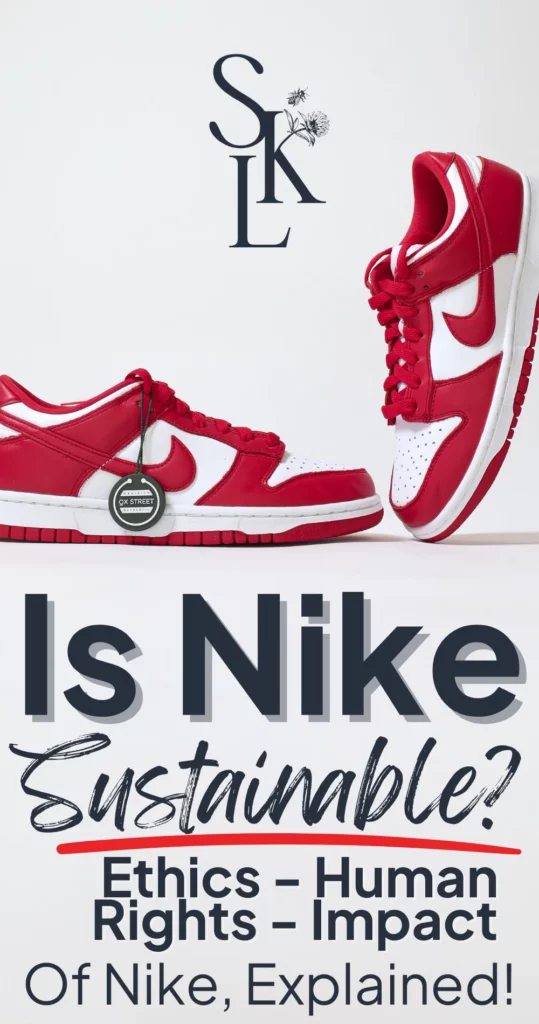
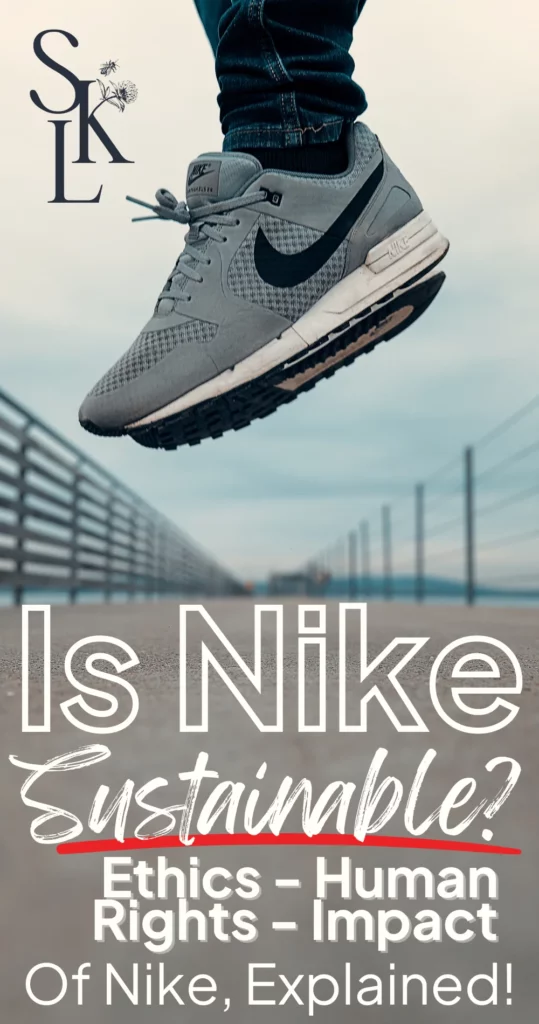
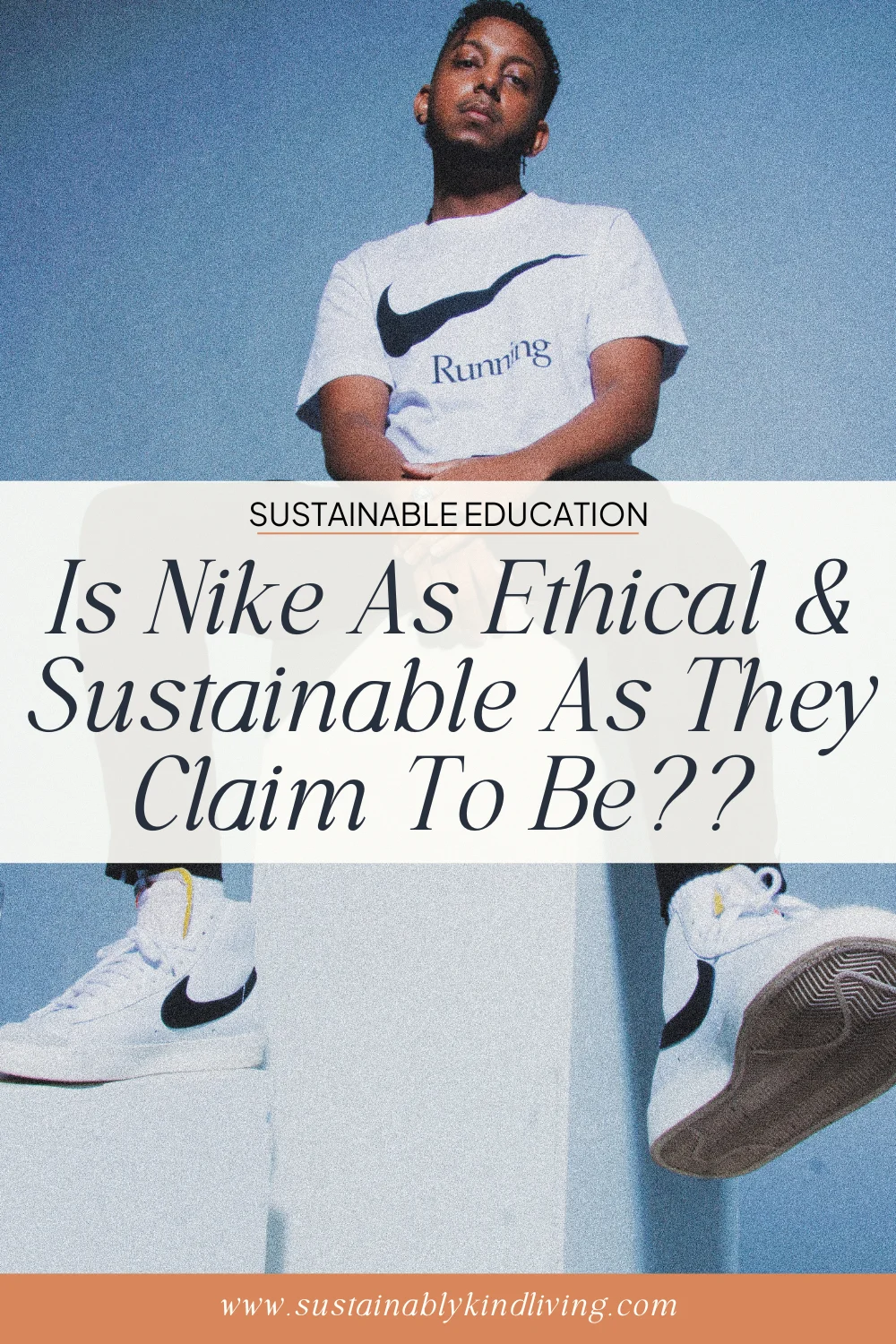
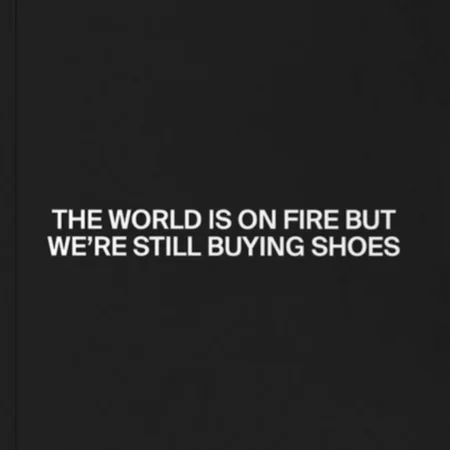

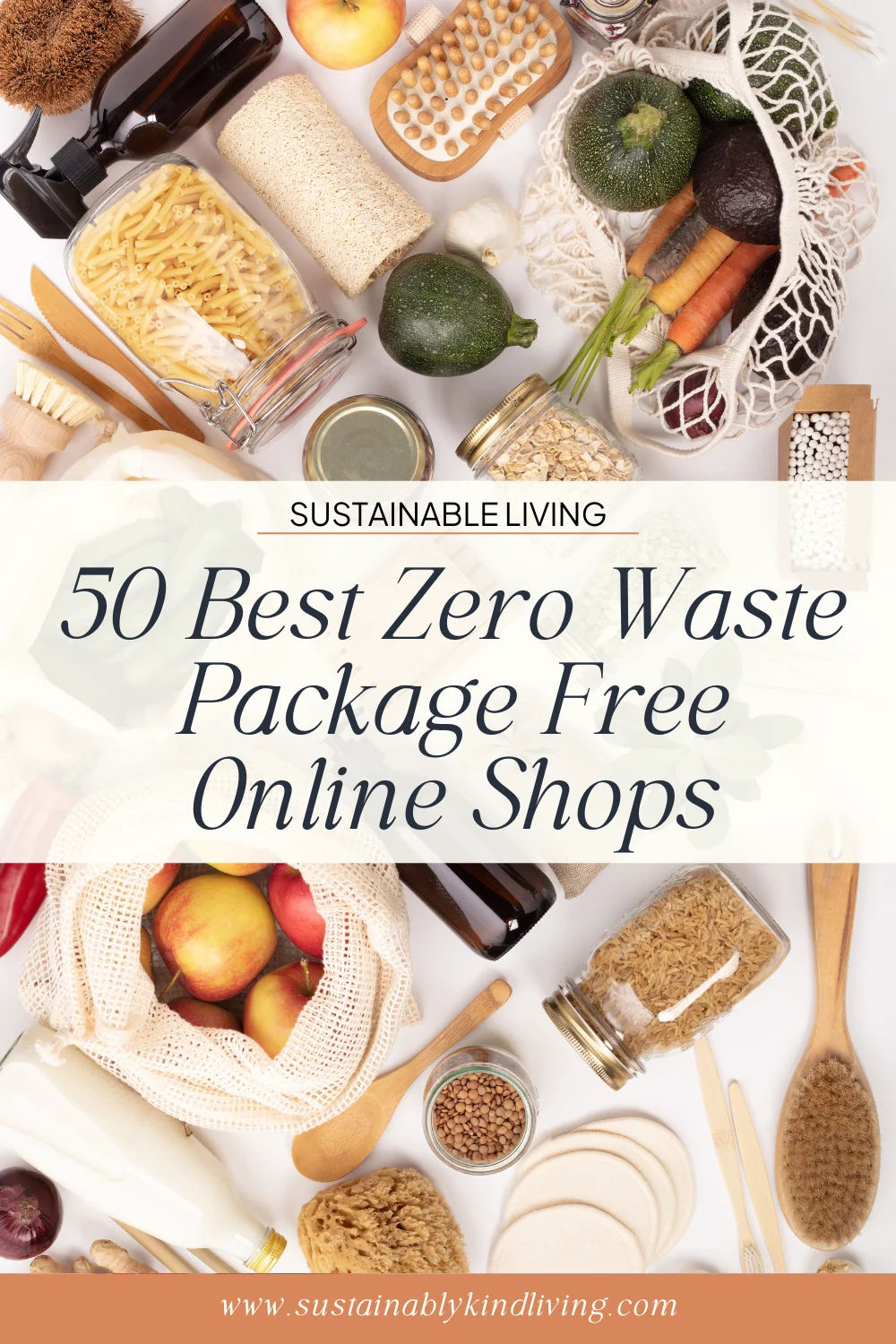

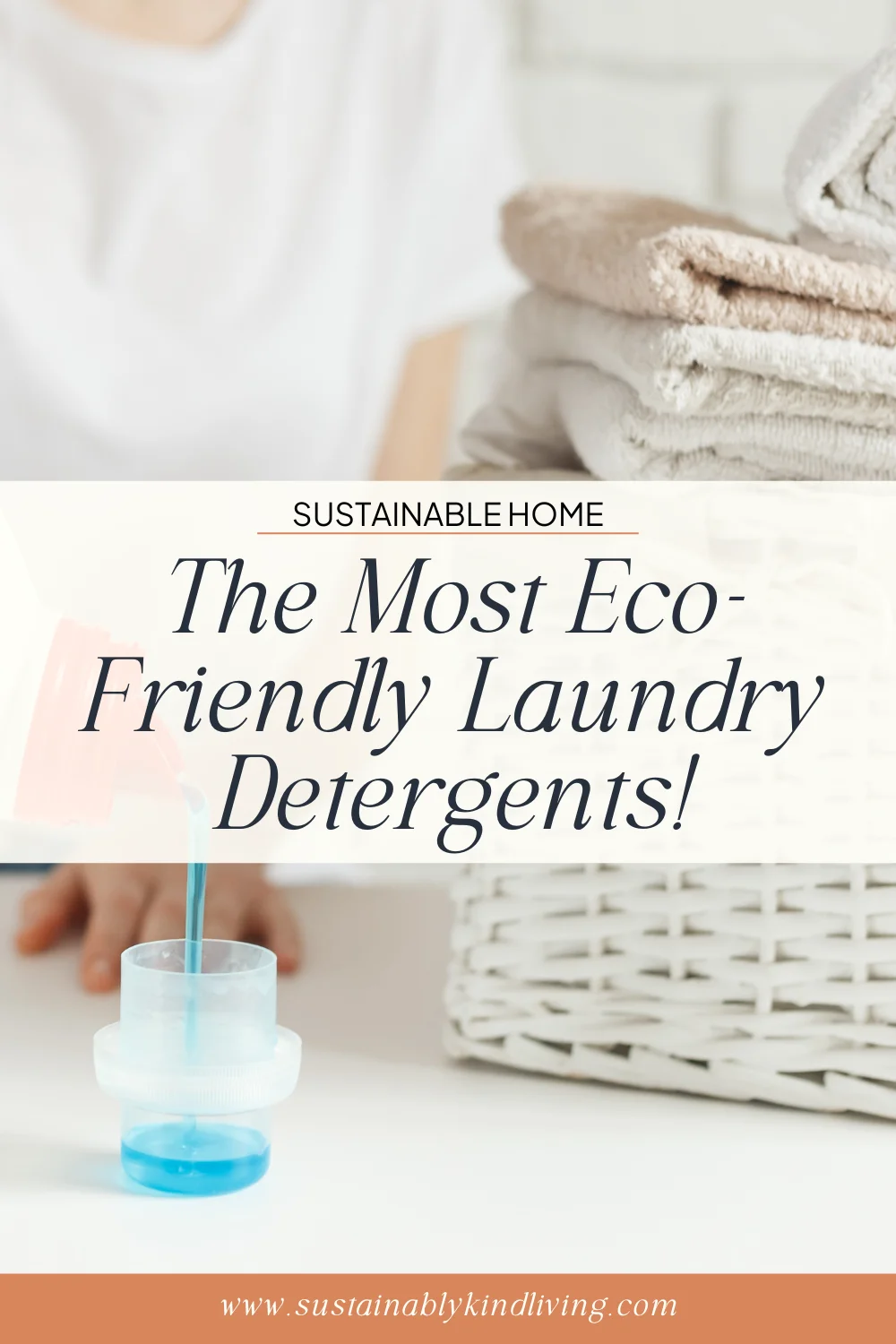
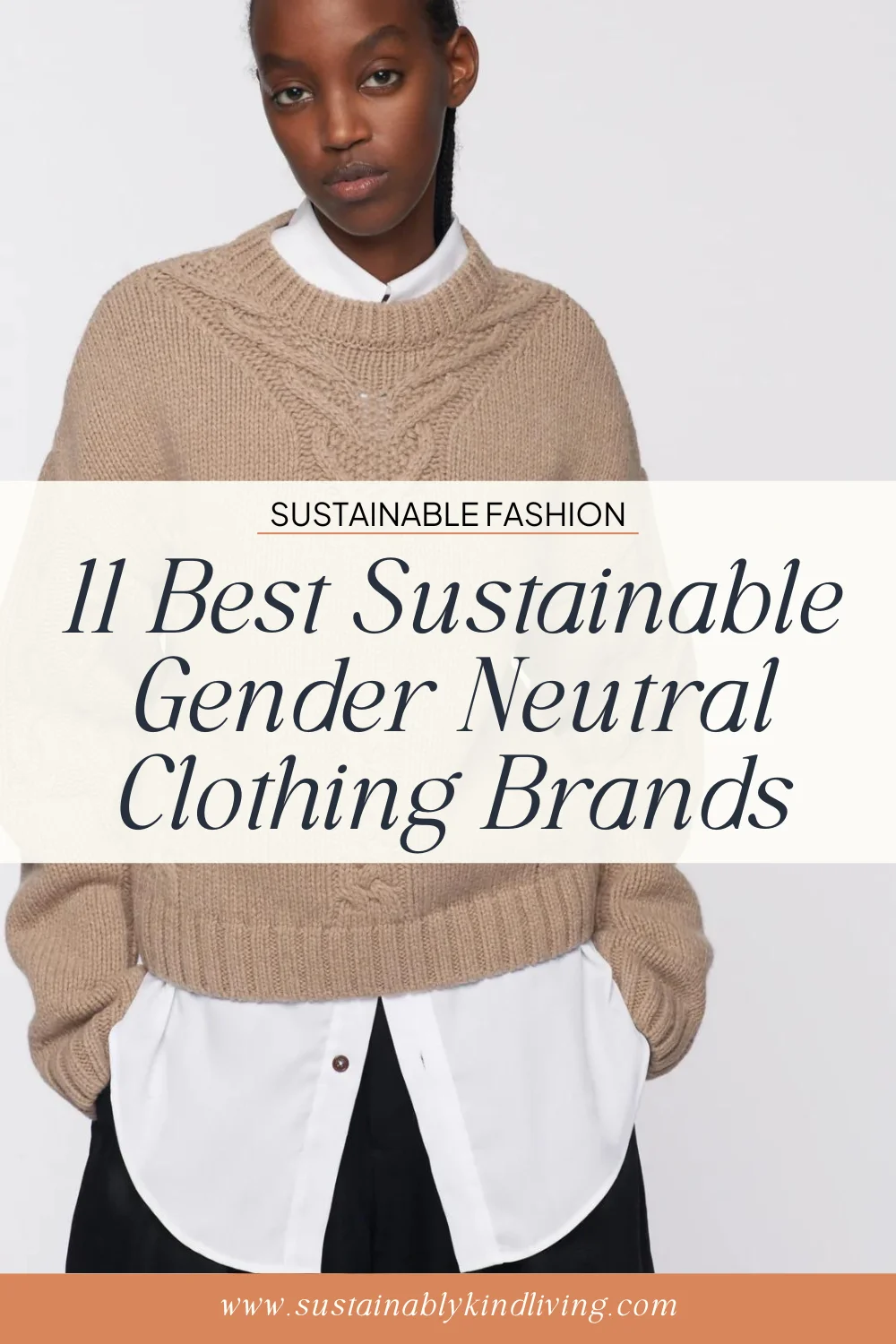
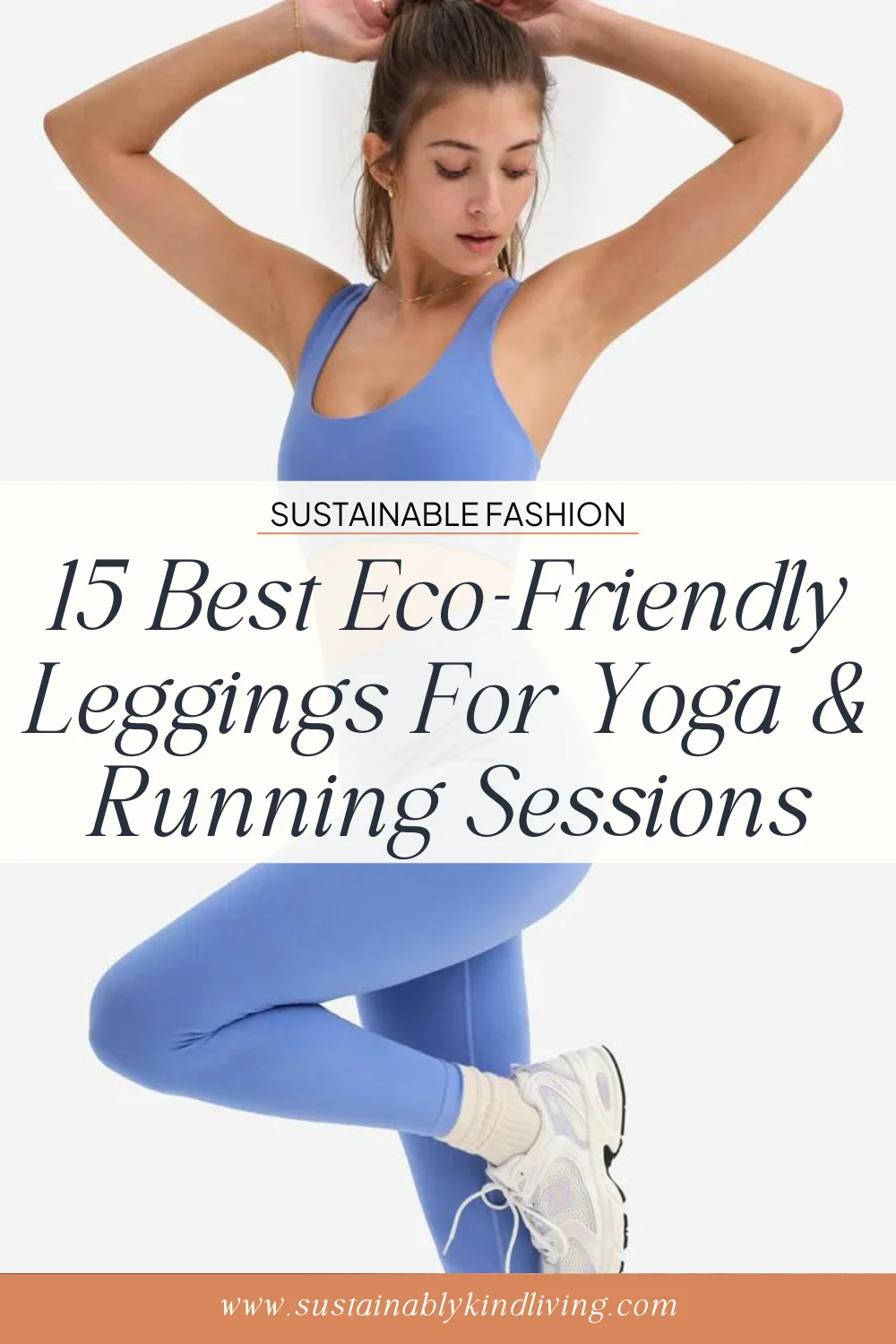


+ show Comments
- Hide Comments
add a comment